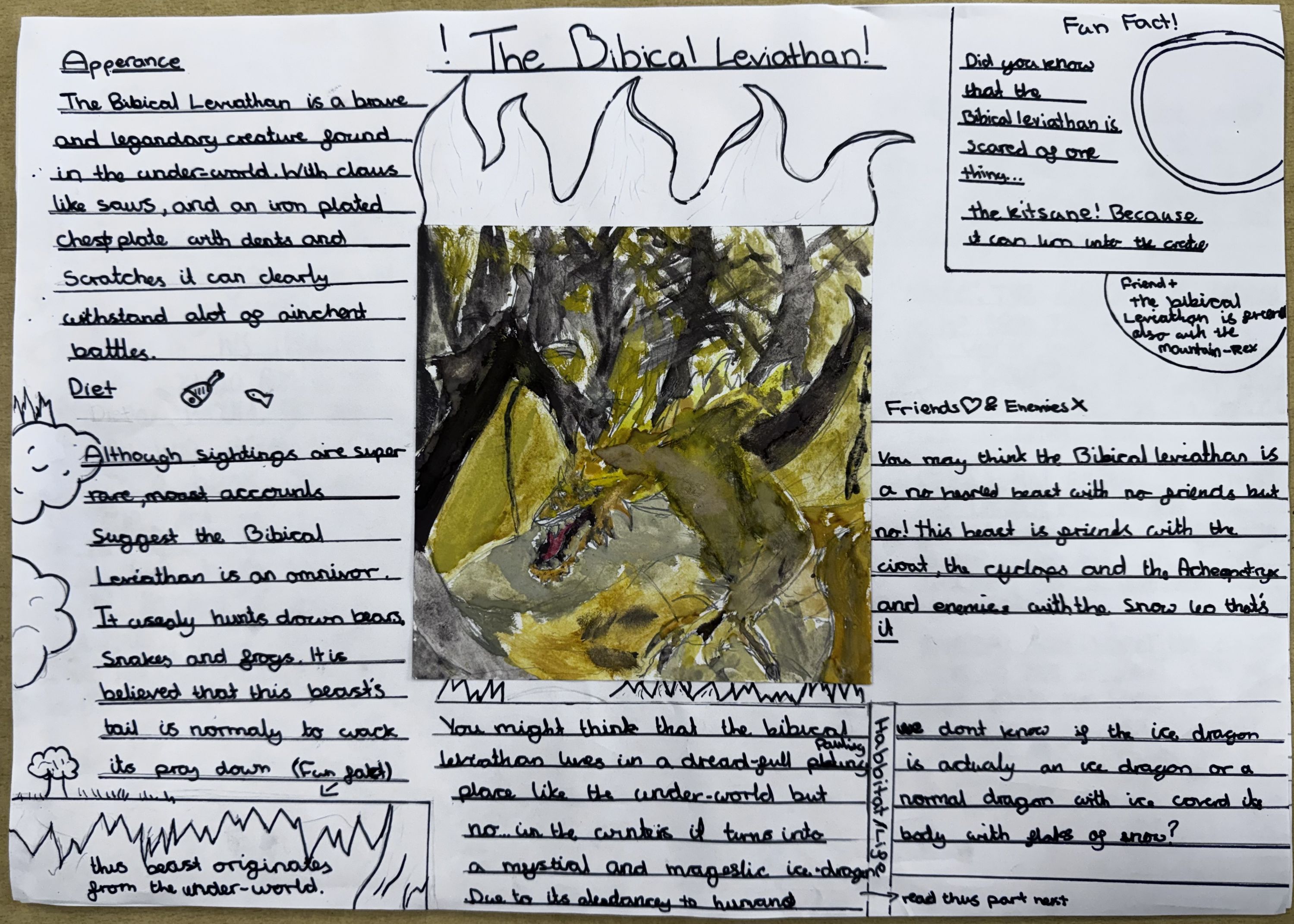English - Writing
English – Writing
Our Writing Intent
At Manuden Primary School, we believe that writing is a powerful tool for growing minds and hearts. Our intent is to nurture confident, curious writers who express themselves clearly and creatively, inspired by a love of language and purpose. Through writing, children develop their ability to communicate, organise their ideas, and explore the world around them — helping them to grow their dreams and make their voices heard.
To achieve this, we teach children to:
-
Express themselves clearly, precisely, and with enjoyment across a range of styles and genres.
-
Draw on knowledge gained from diverse reading to model their writing after different authors and purposes.
-
Understand writing as a means to remember, communicate, organise, and develop ideas effectively.
-
Write confidently for a wide variety of audiences and purposes, adapting their language accordingly.
-
Master the formal structures of English, including grammar, punctuation, and spelling.
-
Develop neat, joined handwriting with accurate spelling and expression.
-
Take ownership of their learning by using independent strategies for self-monitoring and self-improvement.
-
Experience writing across the curriculum to make their learning meaningful and connected to real life.
Our approach aligns with the ‘transcription’ and ‘composition’ requirements of the National Curriculum (2014), ensuring high-quality teaching in every phase.
How We Plan Writing
Early Years Foundation Stage (EYFS)
In EYFS, writing opportunities follow the Development Matters framework and encourage early mark-making through engaging, high-quality, skill-building activities. Phonics is taught daily using the Little Wandle scheme, supporting children in developing sound awareness, letter formation, and early writing skills.
Key Stage 1 and 2 (KS1-KS2)
We use the “Herts for Learning” (HfL) Essential Writing framework as the backbone of our planning. This provides:
-
A clear, progressive structure with sequenced units and termly overviews.
-
A broad range of genres to ensure children experience diverse writing opportunities every year.
-
Emphasis on purpose, audience, and meaningful outcomes so children understand how writing can inform, entertain, persuade, or inspire discussion.
-
Coverage of all National Curriculum requirements.
-
Flexibility to meet the needs of all learners through quality first teaching.
-
Embedded grammar learning within writing units, rather than isolated lessons.
Teachers regularly assess and revisit previous objectives to close gaps and consolidate learning.
Writing Implementation
 English lessons at Manuden often include:
English lessons at Manuden often include:
-
Whole-class teaching of learning objectives (WALT).
-
Teacher modelling of writing strategies.
-
Use of phonics and spelling strategies to support word-level skills.
-
Guided and supported writing sessions tailored to individual and group needs.
-
Shared writing and independent writing opportunities.
-
Extended writing to deepen skills and stamina.
-
Use of real books as stimuli and writing models.
-
Drama and talk-for-writing activities to develop oral language and creativity.
Improving Writing
We encourage children to improve their writing during and after lessons by:
-
Using formative assessments to identify needs and provide targeted support.
-
Engaging in RRR (Review, Revisit, Remember) discussions to build on previous learning.
-
Planning writing with clear attention to audience, purpose, and intended outcomes.
-
Practising drafting and editing aligned with our marking policies and non-negotiables.
-
Using classroom visual aids such as writing walls, spelling lists, and letter formation cards.
-
Receiving targeted support from teaching assistants to extend learning.
-
Marking with clear symbols to guide editing and improvement.
-
Celebrating good work through visualiser demonstrations.
-
Using writing TAFs (Teacher Assessment Frameworks) to help children self-assess.
-
Providing disadvantaged pupils with clear writing targets to focus progress.
-
Maintaining termly portfolios (Authors’ Books) so children can track their growth over time.
Writing Impact
At Manuden, all children make measurable progress in writing as they journey through school. We track progress using:
-
Regular writing scrutiny and lesson observations.
-
Subject leader learning walks.
-
Herts for Learning and government assessment frameworks (TAFs).
-
Internal data analysis and termly progress meetings.
-
End of phase data reviews.
-
Small-step progress tracking (Pivots) for SEND learners.
This data informs ongoing teaching adjustments to meet individual needs and ensure every child’s success.
How We Teach Handwriting
Our handwriting teaching reflects the Manuden vision of growing confident and independent learners who take pride in their work. Pupils learn to:
-
Produce neat, legible handwriting in the school’s chosen font.
-
Develop fluent, automatic letter formation and writing flow.
EYFS
Handwriting begins with multi-sensory activities—such as painting with water, chalk, and playdough—to develop fine motor skills. Pre-cursive letter formation is introduced alongside phonics learning, with a focus on developing a comfortable pencil grip.
KS1 and KS2
Children learn cursive handwriting with emphasis on letter shape, joining strokes, spacing, and correct sizing of capitals. Regular practice is provided through dedicated handwriting books.
How We Teach Phonics
Phonics teaching is based on the systematic, synthetic Little Wandle programme, building strong foundations in sound recognition, blending, segmenting, and spelling from Nursery through Year 2 and beyond.
-
Nursery focuses on speaking and listening skills including environmental sounds, rhythm, rhyme, and oral blending.
-
Reception and Year 1 progress through phases 2 to 5 of phonics learning, with daily lessons and regular catch-up interventions to support all learners.
How We Teach Spelling
Currently, we use Spelling Shed to teach spelling across the school. However, we are gradually transitioning to Little Wandle Spelling as more year groups are introduced, with Year 2 being the first to adopt this programme.
From Year 2 onwards, children build on their phonic knowledge to understand spelling rules and patterns, supported by the new Little Wandle resources.
-
We develop understanding of word morphology and etymology to help children spell confidently.
-
Weekly spelling tests and dictations reinforce patterns and apply spelling in context, drawing from National Curriculum word lists.
